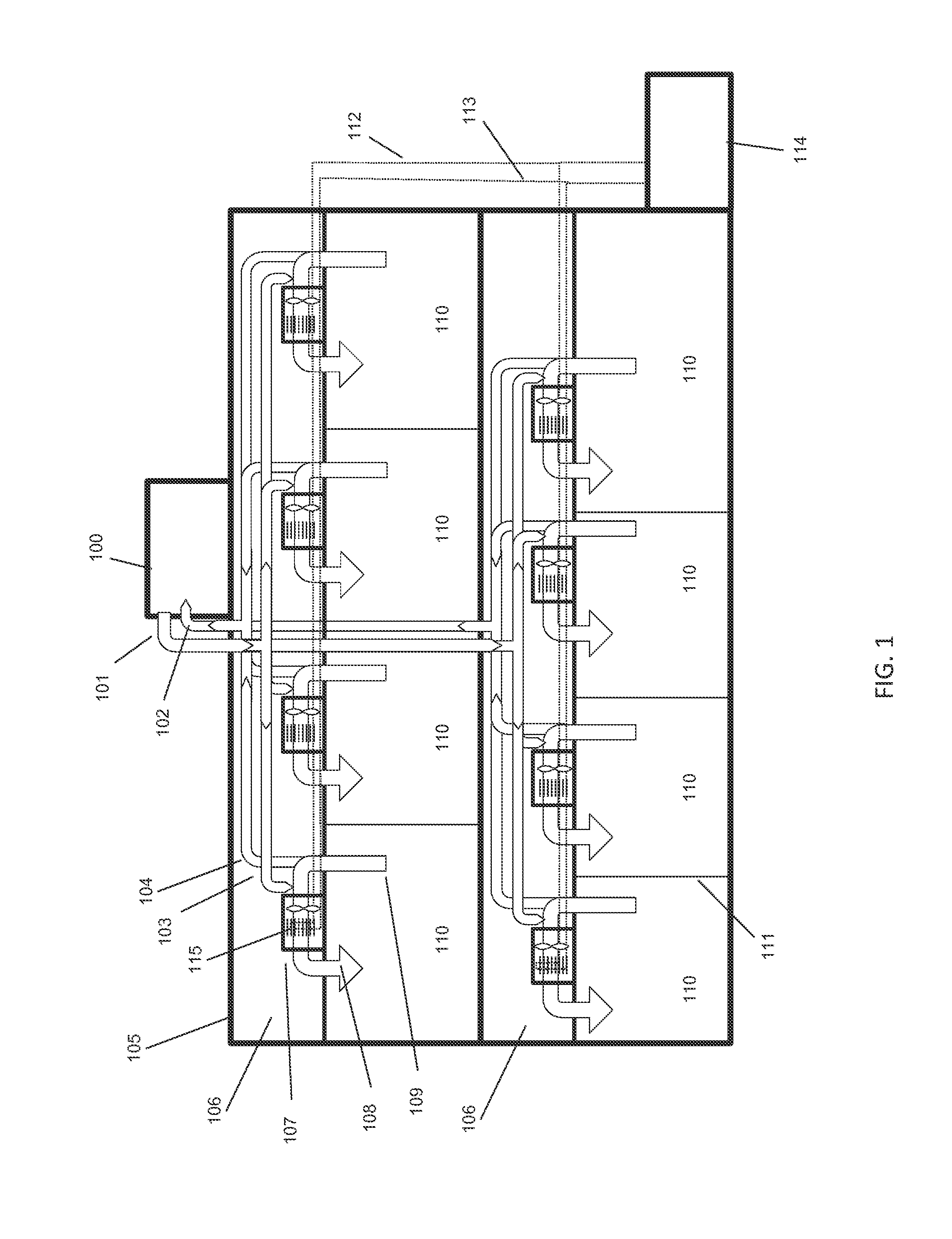In-ceiling liquid desiccant air conditioning system
a liquid desiccant and air conditioning technology, applied in the field of ceiling liquid desiccant air conditioning systems, can solve the problems of large fan power and pressure drop across the packed bed, significant increase in overall energy costs, and large fan power and pressure drop, so as to achieve constant relative humidity and efficient dehumidification
- Summary
- Abstract
- Description
- Claims
- Application Information
AI Technical Summary
Benefits of technology
Problems solved by technology
Method used
Image
Examples
Embodiment Construction
[0030]FIG. 1 depicts a typical implementation of an air conditioning system for a modern building wherein the outside air and the space cooling and heating are provided by separate systems. Such implementations are known in the industry as Dedicated Outside Air Systems or DOAS. The example building has two stories with a central air handling unit 100 on the roof 105 of the building. The central air handling unit 100 provides a treated fresh air stream 101 to the building that has a temperature that is usually slightly below room neutral conditions (65-70F) and has a relative humidity of 50% or so. A ducting system 103 provides air to the various spaces and can be ducted to the spaces directly or into a fan-coil unit 107 mounted in a suspended ceiling cavity 106. The fan-coil unit 107 draws air 109 from the space 110 and pushes it through a cooling or heating coil 115 mounted inside the fan-coil unit 107. The cooled or heated air 108 is then directed back into the space where it prov...
PUM
 Login to View More
Login to View More Abstract
Description
Claims
Application Information
 Login to View More
Login to View More - R&D
- Intellectual Property
- Life Sciences
- Materials
- Tech Scout
- Unparalleled Data Quality
- Higher Quality Content
- 60% Fewer Hallucinations
Browse by: Latest US Patents, China's latest patents, Technical Efficacy Thesaurus, Application Domain, Technology Topic, Popular Technical Reports.
© 2025 PatSnap. All rights reserved.Legal|Privacy policy|Modern Slavery Act Transparency Statement|Sitemap|About US| Contact US: help@patsnap.com



